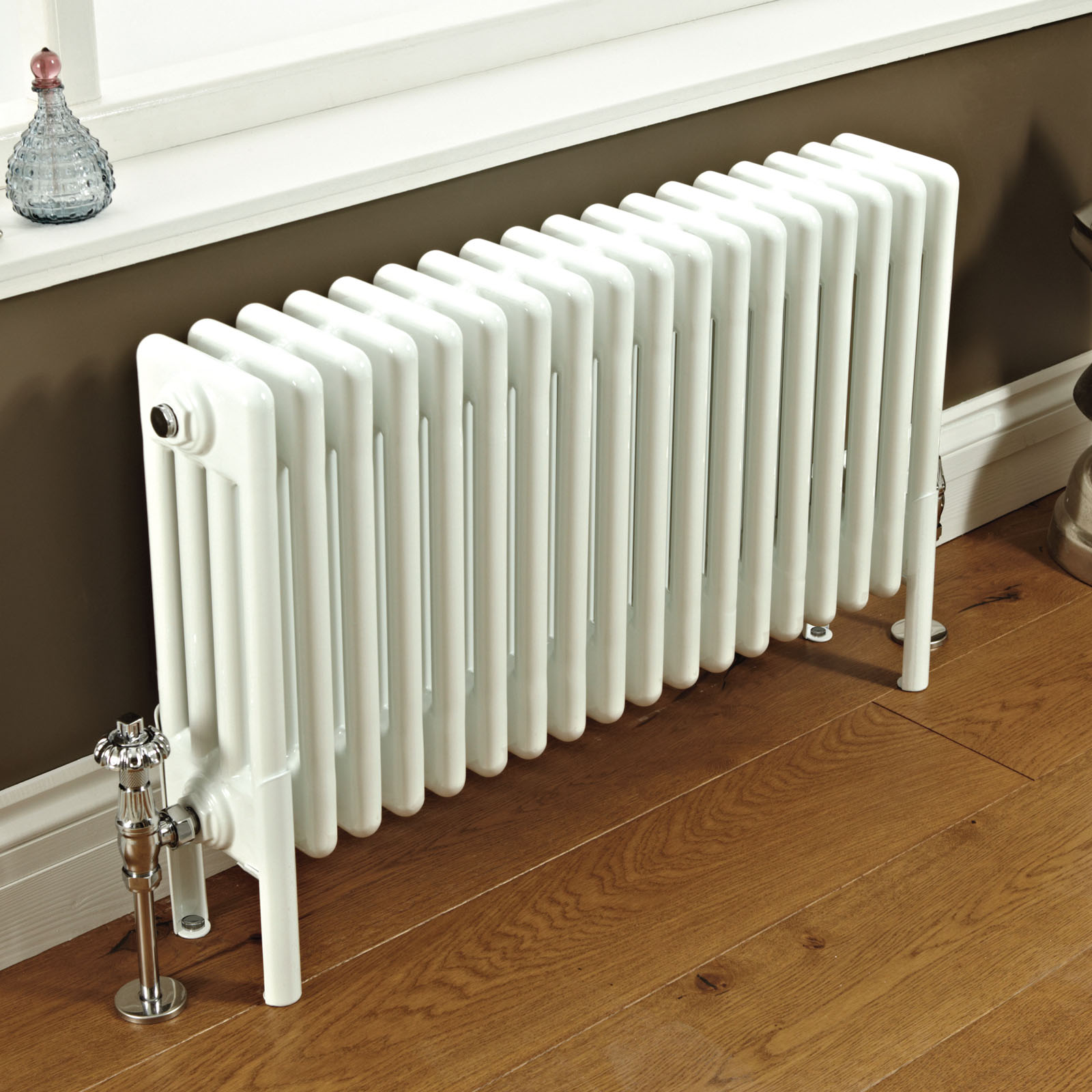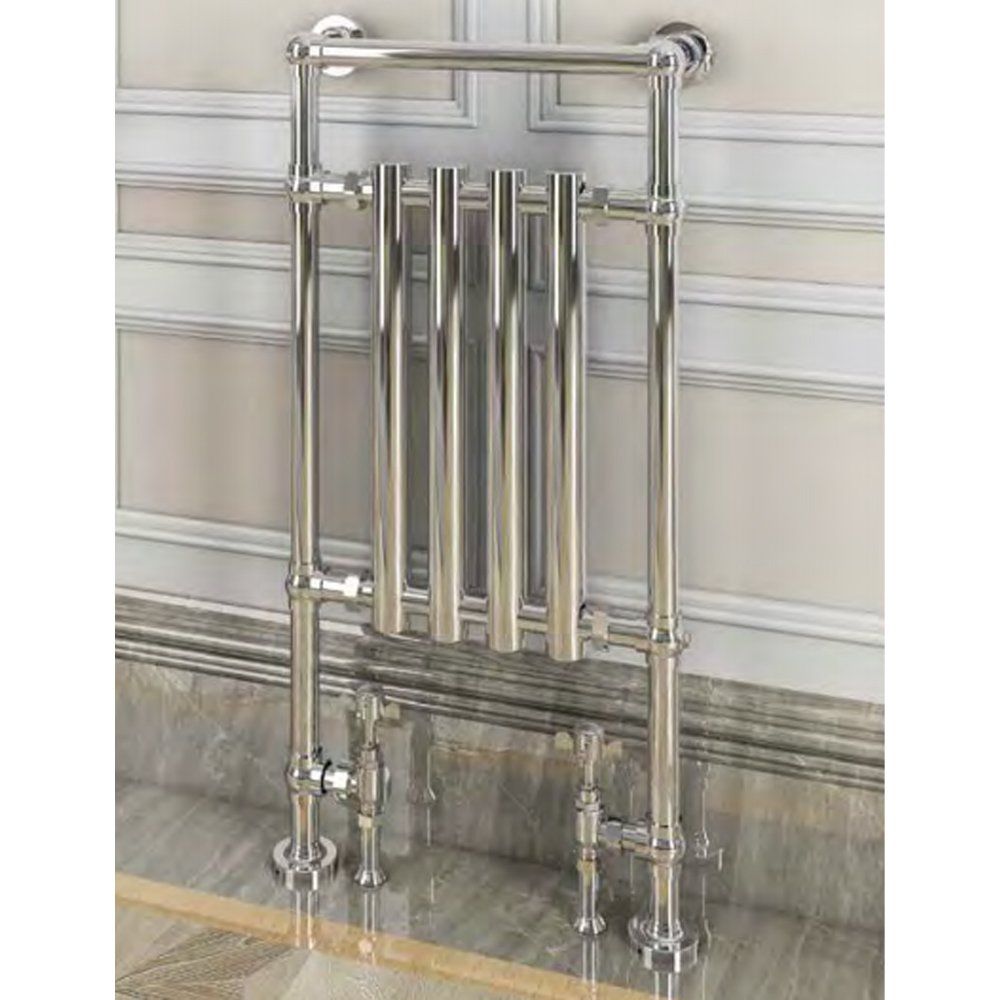- Classic And Timeless
- Durable And Efficient Heating
- Why Buy From Us
- Classic And Timeless
- Durable And Efficient Heating
- Why Buy From Us
Traditional Radiators
Traditional radiators are a superb choice for those seeking an inexpensive yet dependable way to warm up any space in their home. Not only do they have the ability to generate reliable and efficient heat, but they also come at an admirable cost-effective price point.
At Posh, we have various traditional radiators in various sizes and styles to meet your needs and preferences.
From vintage-style radiators to steel vertical radiators, all our traditional radiators are designed to meet the highest standards. Our range includes a variety of sizes and styles that are perfect for any space – from small apartments to large family homes.
What Comprises A Traditional Radiator
A traditional radiator is a heating device that uses hot water to warm the air in a room. This type of radiator is typically made up of two main parts:
The Column
Boasting an impressive design, the column of a conventional radiator is composed of many cylindrical tubes filled with hot water and linked together by metal fins. When it radiates heat from these warm liquids within its pipes, a comfortable warmth floods the space around it.
The Sector
Not only does the sector of a traditional radiator facilitate the control of hot water through its valves and mechanisms, but it also adds an aesthetically pleasing touch to any space with its elegant ornaments and badges.
Traditional VS Modern Radiators
Traditional radiators are known for their classic and timeless design, while modern radiators have a sleek and contemporary look. Both types of radiators have their own advantages and disadvantages when it comes to heating up a room.
Here are some of the main differences between traditional and modern radiators:
Design
For a timeless, classic look, traditional radiators are perfect for any home. However, if you're looking to create something with more of an edge and modern flair, then go for the contemporary style of the radiator.
This type of heating appliance can instantly transform your space into a truly stylish and bold statement piece.
Size
For larger areas, traditional radiators offer an ideal solution due to their size. On the other hand, modern designs feature slimline and discreet models fit for smaller spaces without taking up too much space or compromising the room's overall aesthetic.
Material Quality
Traditional radiators are typically crafted from materials like steel, brass or cast iron that guarantee a long-term service life.
Conversely, modern radiator designs can vary in material composition to be more lightweight - aluminum and plastic being two examples-- yet often at the expense of robustness.
Efficiency
Incorporating modern elements such as thermostats and timers can make traditional radiators just as efficient - if not more so - than newer models, leading to energy savings of up to 70%.
Modern radiators are already renowned for their superior efficiency, but adding these features allows them to be even better at heating a room with much less power.
Different Installation Types Of Traditional Radiators
Traditional radiators can be installed in different ways, depending on the type of radiator and the space available. Here are some common types of traditional radiator installation:
Wall-Mounted
Wall-mounted radiators are the ideal choice for any room of your home; they provide secure and stable installation when mounted to walls using reliable brackets. This traditional radiator style is a dependable go-to, found in most homes due to its convenience and reliability.
Floor-Mounted
Floor-mounted radiators are perfect for those larger areas, like bedrooms or living rooms, that require more warmth. Additionally, they can also be used to bring beauty and charm to any outdoor space you may have.
Freestanding
Freestanding radiators can be the perfect solution for any space that needs additional warmth. Unlike fixed units, these easy-to-maneuver devices allow you to place them wherever needed most and adjust as necessary.
All you have to do to secure it is to use bolts or screws to attach it to the floor. However, freestanding radiators may not be as efficient as wall-mounted or floor-mounted models.
Factors To Consider When Buying Traditional Radiators
When it comes to buying a traditional radiator, there are a few important factors to consider. Here are some of the main elements you should take into account when looking for a radiator:
Size
First and foremost, you must ensure that your chosen radiator is the right size for the space you want to heat. Ideally, the radiator should be able to cover the whole room or area you want to heat.
Material
If you're looking for a strong and durable option, steel radiators are the way to go. On the other hand, if it's more of a classic aesthetic that you desire, brass or cast iron radiators provide exactly that.
Each material offers its own unique benefits and drawbacks - so take your time in deciding which would best fit your needs!
Design
If you want to inject a unique style into your home, traditional radiators come in many pleasing designs. From classic looks to more modern and minimalist styles, there's something for everyone.
Column radiators, panel radiators and convector radiators are all popular designs for traditional radiators that you can choose from.
BTU Output
The British Thermal Units (BTU) of a radiator can determine how efficient it is at heating up a room. A higher BTU output means the radiator can heat up a larger area in less time, so it’s important to make sure you choose one with an appropriate rating for your needs.
At Posh, we have a large stock of traditional and modern radiators to help you find the perfect traditional radiator for your home. Whether you're looking for a cast iron radiator or a standard one, get ready to be supplied with the best quality radiators that money can buy.


















